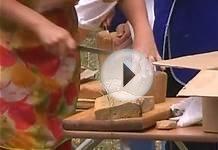How many beautiful photos of flowering cacti were sent to the Land of Masters. Looking at these wonders of nature, I have long wanted to grow my own cactus, only modular. And so it bloomed with me too ... Try to grow such a variety too. The number of flowers on one plant and their colors can be very diverse.
All work is made of modules, folded from 4 × 6 cm rectangles according to the scheme Triangular origami module.
Flowers

Cactus

pot

Such a cactus will be able to please with its flowering for a long time!
Joyful creativity to you!
From the flora of this section, we have at our disposal not only ordinary flowers, such as chamomile, made from modules, but also a more exotic version - Cactus.
Of course, it’s a joke, but: if you don’t like watering flowers very much, then you will especially like this craft, because, on the contrary, she doesn’t really like water.

Let's start the assembly with a pot. We connect the modules as shown in the figure, and form a ring out of them, two rows of 28 modules. Long side facing out. From above we pass one more (third) row completely from yellow modules.
In the fourth row we add 2 modules - it will turn out 30. Immediately we begin to form a pattern on the pot. We install the white module through 2 yellow ones. The fifth row of 30 modules is white through 2 yellow ones. The sixth row is completely white.
Next, we fill in the modules, drawing the picture symmetrically in reverse, as shown in the figure. At the end of the pot, we lay out a row of yellow modules, turning them with the short side outward - we get a beautiful edging.
Pot for modular origami Cactus is ready, and now we can start making the plant itself.
Again we collect a ring of 8 green modules in a row, connecting them as shown in the figure.
In each row we add 2 modules, we go through 11-12 rows. At the same time, we bend the corners to the middle, round the edge of the base of the stem. The main part is ready.
Video: Modular origami Cactus Modular origami Cactus
As you probably know, many cacti have several shoots extending from the main stem. Let's make them too. They are performed in the same way. At the base there will be a ring of 2 rows of 3 modules each.


For shoots, 5-6 rows with an extension are enough, but this is a matter of taste. They may not be done at all.
Almost the final stage: assembly together. First, install and glue the main stem to the pot. After that, we glue the processes. For beauty, the cactus can be decorated with flowers and toothpick needles.
This is how you can easily replenish your greenhouse with a modular origami Cactus.









Origami technique - the art of addition













Welcome, masters of modular origami and those who only comprehend this beautiful art! Today you will learn how to make a cactus from modules. The main thing for this is to have on hand a lot of multi-colored triangular modules and, of course, patience.
Try to collect other crafts from modules
Modular origami cactus with yellow flowers
As you know, cacti bloom extremely rarely, not particularly pampering us with their beautiful flowers. But by making a flowering cactus from triangular modules, you will enjoy its beauty all year round. Flowers and pots can be made in any color, it all depends on your taste and imagination.

pot
To make a pot, you will need orange and white triangular modules. 1-3 row - connect and close in a ring 18 modules in each row. Unscrew the workpiece.


4 row - alternate 1 white and 2 orange pieces. 5 row - alternate 2 white and 1 orange module. 6 row - 1 orange and 2 white modules. 7 row - 2 orange and 1 white module.


8 row - put a module on two corners between two orange modules, and the rest - one module on one corner (30 orange modules in total, short side out).
Cactus (two parts)
The lower part of the cactus - 150 modules: 1-2 row - connect and close 16 modules in a ring (8 modules in one row).

3-10 row - add 8 more modules between two modules of 2 rows (inside the first, without fastening). Each row should have 16 pieces.

You should get an oval figure, on top of it (between the modules of the initial row), insert 8 more modules, as in the figure.


Upper part - 109 modules: 1-2 row - connect 12 modules into a ring (6 modules in a row).

3-7 row - connect 12 modules.

We make a symmetrical hole: 8 row - 10 modules. 9 row - 9 modules. 10 row - 8 modules. 11 row - 7 modules. 12 row - 3 modules.



Flowers
1. Connect and loop 5 orange modules.

2. Put on 4 yellow modules (at one corner, as in the figure), you will get two “half-arches” and connect them with one yellow module.

The assembled composition will decorate any home!
MK was prepared by Olesya Budanova
Modular origami - cactus

We will need:
- green, yellow, pink and blue paper;
- glue.
- Let's start the step-by-step production of a cactus using the modular origami technique by creating a large flower module. To do this, take a square sheet of pink paper (10 × 10 cm), fold it diagonally in half, then in half again, carefully marking the fold lines. Then fold the square in half, then in half again and fold over one corner.
- Bend the upper corners of the resulting rhombus to the center. Repeat this for each side of the diamond. In the end, you should end up with a square with clear fold lines emanating from the center. After that, start modeling the flower, bending the corners alternately towards the center, and then inward. Using a similar scheme, make 35 more green paper modules for our modular origami cactus.
- When all the modules are ready, proceed to the assembly. To do this, lubricate the modules alternately on the sides with glue and connect them to each other. If the paper is thick, fix them with paper clips until the glue "grabs". To make cactus branches, fold three modules of different colors by inserting them into each other. Then paste the resulting flower into the composition.
- It's time to make spines for our cactus. To do this, use a small square piece of paper and a toothpick. After winding the paper around a toothpick, grease its tip with glue and wait until it dries. Then remove the toothpick and insert the resulting needle between the cactus modules. Such needles will need 10-12 pieces.
- On this photo lesson on how to make a cactus out of modules, one could complete it, but an origami pot would perfectly complement the composition. To do this, you need to make 202 classic triangle modules. Then they are put on top of each other, forming a semblance of an accordion. Cactus from modules in such a pot will look great!
You can also make other crafts from the modules, for example, beautiful vases.
Today we will continue to make crafts using the modular origami technique and make a beautiful prickly flower - a cactus.
To make an origami cactus, we need gray, red, green and yellow paper, which will be used to fold the modules (read how to make origami paper modules).
Mastering
First we will make a cactus pot. For this we will use gray and red origami modules.
1. We add the first three rows of gray modules (the rows are added at the same time). Each row consists of 18 modules.
2. We close the rows of modules into a ring.
3. We turn the resulting pot blank inside out.
4. From the next fourth row, we begin to use red modules to fold the pattern, using the following sequence: one red, two gray. In the fifth row we already use two red ones, one gray one. In the sixth: one gray, two red. In the seventh: two gray, one red.

5. We add the last row of thirty gray modules, which should be turned with the short sides out.
When the cactus pot is ready, we begin to fold the flower itself. In total, when assembling it, we need about three hundred origami modules.
1. We will make a cactus from its lower part. To begin with, let's take 16 modules, from which we add the first two rows (8 modules each). The modules must be connected as shown in the figure.

2. Having collected two rows, we close them in a ring.
3. In the third row, we must increase the number of models to 16. To do this, we will need to additionally insert one module between the two modules of the second row (8 modules in total will go for this). So, for the third row we need 24 green modules.
4. Now we need to collect ten rows of 16 origami modules each. This will give an elongated oval shape to the craft.

5. The modules of the tenth row must be sealed, and 8 more additional modules must be inserted from above. The lower part of the cactus is finished.
6. We begin to make the upper part of the craft from the first two rows (6 modules each), which are closed in a ring. In the third row, the number of modules is increased to 12.
7. When making the next four rows, we need 48 origami modules (12 in a row).
8. Lay out a symmetrical hole. To do this, in the eighth row we use 10 origami modules, in the ninth - 9, in the tenth - 8, in the eleventh - 7, and in the twelfth 3 modules that need to be inserted through one.

We make flowers for a cactus.
9. We close ten red modules in a ring.

10. We make two “semi-arches” from 8 yellow modules, as shown in the figure.
11. We connect the "semi-arches".
12. We put the resulting design on 2 red corners.

Schemes 12-13
13. In order to finish the flower, we make five more "arches". It is better to decorate the cactus with 2 flowers, so make another one.
14. In order to fix the origami cactus in a pot, insert a tube of folded paper into it.

Cactus is a favorite plant of many. First of all, it is interesting for its exotic appearance, as well as the beauty of flowers. At the same time, a living cactus grows, needs special feeding and transplants, and flowers do not always bloom.
However, it is possible to have a cactus that does not have to be looked after, and in appearance it is comparable to the real one. You can make such a craft yourself, and today I will consider one of the ways to create a cactus using the modular origami technique.
Necessary materials
To make an origami cactus, we need the following things: about 3 sheets of orange paper, 5 sheets of white, 5 sheets of blue, 16 sheets of dark green, 6 sheets of light green, 6 sheets of yellow and 2 sheets of pink. To simplify the assembly process, you may need 2 toothpicks or matches, as well as a weighting agent (stone, plasticine, etc.). In some cases, glue may be needed.
Scheme of assembling a cactus from modules
Let's make a pot first
Consider the scheme for creating our cactus. Alternately, we will assemble several parts using the modular origami technique, and then put them together:
- To begin with, we will make modules (elements) of all colors from the prepared paper. To do this, cut the sheet into 16 identical rectangles and fold them as shown in the photo (see 8 steps).


- Now let's start making the first part of the pot. For him, we need about 69 blue pieces, 72 from white paper, and 45 from orange.
- First, let's make the base of our pot. To do this, we place two orange elements next to each other, as shown in the photo, and then fasten them with a third one, inverted relative to the others. Please note that during assembly, the module is not fully inserted into others, you should not try to press hard on it, the connection is quite strong.

- For the convenience of further assembly, we turn the workpiece over. Now we apply another element to the top row and dock it with another, inverted relative to the first.
- We add a module of the third row, which fastens the parts of the second. It is put on them in the usual way, it is not necessary to turn it over.
- We attach one more element to the top row, fixing it with the module of the second row and adding another one in the third row.
- We repeat the already known operations until we have 18 elements in each row. We close the resulting chain in a circle and fasten it. This is the base of our pot. It must be strong, so it is better to glue the parts in some places if the structure falls apart.

- Now we put the circle on the third row in the usual way, that is, the assembled modules should not be turned over relative to the elements of the third row, they should be completely put on them. In the future, all rows will be added in this way. We need to put on 12 blue and 6 white modules in the following sequence: two blue, then one white.
- In the next row we put on two white ones, and then one blue one. Note that the two white elements must be worn so that the white from the previous row is between them.
- We have such a pot.
- Again we put on 6 blue and 12 white modules in the same sequence, the blue ones should be between the whites of the previous row, in their location they coincide with the white elements of the row before last.

- The next row consists of 12 blue and 6 white pieces. Blue ones are put on so that an element of the same color of the previous row is between them.
- The entire next row is made from blue modules.

- Let's make an additional decoration for the pattern of our pot, for this we will perform the next row of 8 orange and 8 blue elements. We first put on elements of one color, then another, until we finish the row.
- The last row is made from 36 white modules. We put them on, turning them over relative to the elements of the previous row, as shown in the photo. Our pot is ready! You can put it aside and move on to the manufacture of the next part.
Now we collect the trunk of an exotic plant

Adding an inclined branch

Let's make paper flowers

We collect a cactus from origami modules in a pot

Video if needed
If you have questions in the process of creating crafts, you can refer to the video, which clearly shows difficult moments. Below is a video in which a similar cactus is assembled from modules, but using slightly different paper colors. You can visualize the finished version and choose the color scheme to your liking.
In spring, cacti bloom on many windows.
And you can blossom your own, modular.
POT
For the pot you will need red and gray modules.
1. The three lower rows of the potty consist of 18 modules each. Collect three rows at the same time, connecting the modules, as shown in the photo.
2. Close the resulting chain of modules into a ring.
3. Unscrew the workpiece.
4. From the fourth row, start laying out the color pattern.
In the fourth row, repeat the sequence: 1 red, 2 gray pieces.
In the fifth: 2 red, 1 grey.
In the sixth: 1 gray, 2 red.
In the seventh: 2 gray, 1 red.
5. In the eighth row, lay out 30 gray pieces with the short sides facing out. Put them on in this way: between two gray modules, put one module on two corners, in all other places, put on one module on one corner.
CACTUS
The cactus consists of two parts - a large, lower one (160 modules), and a smaller, upper one (109 modules).
1. Let's start from the bottom. Prepare 16 modules for the first two rows (8 modules per row). Connect the modules as shown in the photo.
2. Collect a chain of two rows and lock it into a ring.
3. In the third row, you need to increase the number of modules.
To do this, place an additional module between two modules of the second row (as if inside the module of the first row).
It doesn't get fixed at all. There are 8 such modules in total. There are 16 modules in the third row.
4. Continue to collect the figure, giving it an oval shape. Each row contains 16 modules. There are ten rows in total.
5. Bring the modules of the tenth row as close as possible. Take 8 more modules and insert them from above between the modules of the first row.
6. Let's proceed to the top part. Take 12 modules for the first two rows (6 modules per row).
Perform two rows in the same way as when assembling the bottom part.
Close the chain of modules into a ring.
In the third row, double the number of modules.
A number of additional modules can be done, but you can not.
7. Make four more rows of 12 modules.
8. Lay out a symmetrical hole.
In the eighth row there are 10 modules,
in the ninth - 9.
in the tenth - 8,
in the eleventh - 7,
in the twelfth - 3
(inserted through one).
9. It remains to make cactus flowers. First, loop 10 red modules into a ring, as shown in the photo.
10. Make 2 "half-arches" of 4 modules, putting each next module on one corner of the previous one.
11. Connect the “semi-arches” with another module.
12. Put the resulting "arch" on 2 corners of the red ring.
13. Make 5 "arches" and put them on the corners. Complete 2 flowers in total.
In spring and summer, beautiful cacti bloom on many windows. Having done modular origami: "Cactus with yellow flowers", your flower will bloom all year and decorate the room with its beauty.
Cactus pot:
To make a pot, you will need gray and red.

1. Each of the three bottom rows has 18 modules. Collect three rows at the same time, connecting the modules as shown in the figure.
2. Close the resulting chain of modules into a ring.
3. Unscrew the resulting workpiece.

4. From the fourth row, start laying out the color pattern. In the fourth row, repeat the sequence: 1 red, 2 gray modules. In the fifth: 2 red, 1 grey. In the sixth: 1 gray, 2 red. 8 seventh: 2 grey, 1 red.
5. In the eighth row, lay out 30 gray modules with the short sides out (ksn). Put them on in this way: between two gray modules, put one module on two corners, in all other places, put on one module on one corner.
Cactus
The cactus consists of two parts - a large, lower one (150 modules), and a smaller, upper one (109 modules).

1. Let's assemble the lower part. For the first two rows, prepare 16 modules (8 modules for each row) and connect as shown in the figure.
2. Collect a chain of two rows and lock it into a ring.
3. In the third row, you need to increase the number of modules. To do this, place an additional module between two modules of the second row (as if inside the module of the first row). It doesn't get fixed at all. There are 8 such modules in total. There are 16 modules in the third row.
4. Continue to collect the figure, I will give it an oval shape. Each row contains 16 modules. There are ten rows in total.

5. Bring the modules of the tenth row as close as possible. Take 8 more modules and insert them from above between the modules of the first row.
6. Let's get to the top, take 12 modules for two paired rows (6 modules per row). Perform two rows in the same way as when assembling the bottom part. Close the chain of modules into a ring. In the third row, double the number of modules. A row of additional modules can be made, or not.
7. Make four more rows of 12 modules.
8. Lay out a symmetrical hole. In the eighth row there are 10 modules, in the ninth - 9, in the tenth - 8, in the eleventh - 7, in the twelfth - 3 (inserted through one).

9. Let's make cactus flowers. First, loop 30 red modules as shown in the photo.
10. Make 2 "half-arches" of 4 modules, putting each next module on one corner of the previous one.
11. Connect the "semi-arches" with another module.
12. Put the resulting "arch" on 2 corners of the red ring.



















































